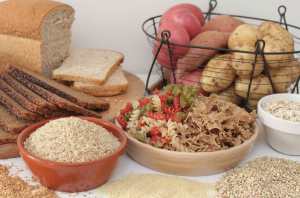“How To Get Maximum Weight Loss & Fitness Results In Minimum Time”
 1. In the beginning, your fitness plan should not be overly aggressive. One of the biggest problems most people encounter when starting a fitness program is rapidly depleted motivation after only a few weeks due to an overly ambitious fitness plan. Two days per week of 20-minute low-intensity cardiovascular exercise (walking, jogging, biking, swimming); and two days per week of 30-minute light resistance training (using weights or resistance machines) is adequate in the beginning. As you become acclimated to the lifestyle “shift” you can add more days and get improved results. But beware: if you try to do too much too fast, you may end up quitting altogether. If you’ve tried and failed doing it alone, then I suggest you get a training partner or personal trainer who will help you sustain your motivation.
1. In the beginning, your fitness plan should not be overly aggressive. One of the biggest problems most people encounter when starting a fitness program is rapidly depleted motivation after only a few weeks due to an overly ambitious fitness plan. Two days per week of 20-minute low-intensity cardiovascular exercise (walking, jogging, biking, swimming); and two days per week of 30-minute light resistance training (using weights or resistance machines) is adequate in the beginning. As you become acclimated to the lifestyle “shift” you can add more days and get improved results. But beware: if you try to do too much too fast, you may end up quitting altogether. If you’ve tried and failed doing it alone, then I suggest you get a training partner or personal trainer who will help you sustain your motivation.
2. If your goal is fat-loss, then your cardiovascular exercise should be low intensity. Your heart rate during cardio exercise should not exceed 50% to 70% of your maximum heart rate. The simple formula for calculating your 100% maximum heart rate is 220 minus your age. If the intensity of your exercise increases your heart rate beyond 70% (which can occur very easily if you are in poor shape), you start shifting from using body fat as your energy source to relying on glucose metabolism. Your personal trainer can supply you with a simple heart rate monitor you can wear during exercise so you always stay in your peak fat-burning range.
 3. Don’t waste your time working small muscles with isolated movements. If you don’t enjoy doing resistance training or are pressed for time, concentrate on working the largest muscle groups with compound resistance movements. When I see overweight people doing wrist curls or lateral raises, I wonder why. It’s generally just a lack of understanding of how their bodies work. Most people want to lose fat and tone and firm their bodies. The way to do that is to use resistance (weights or machines) to train the large muscle groups. Men should be concentrating on legs, chest and back. Women should concentrate more on their legs and back. The best exercises for legs are lunges or squats (your personal trainer will show you the proper form and then monitor you during the exercise) and leg press. The best chest exercise is bench press, and the best back exercise is the seated row. All of these are compound movements, which mean they incorporate multiple muscle groups.
3. Don’t waste your time working small muscles with isolated movements. If you don’t enjoy doing resistance training or are pressed for time, concentrate on working the largest muscle groups with compound resistance movements. When I see overweight people doing wrist curls or lateral raises, I wonder why. It’s generally just a lack of understanding of how their bodies work. Most people want to lose fat and tone and firm their bodies. The way to do that is to use resistance (weights or machines) to train the large muscle groups. Men should be concentrating on legs, chest and back. Women should concentrate more on their legs and back. The best exercises for legs are lunges or squats (your personal trainer will show you the proper form and then monitor you during the exercise) and leg press. The best chest exercise is bench press, and the best back exercise is the seated row. All of these are compound movements, which mean they incorporate multiple muscle groups.
 4. Always, always, always stretch. Stretching improves flexibility, blood flow, muscle recovery, low back pain and a host of other things. Additionally, stretching can prevent injury, make you sleep better and improve your performance in all sports. Always stretch, but be certain not to stretch cold muscles. You should always warm up before stretching. However, it is very important that you know how to stretch. Never bounce! Your personal trainer will show you the proper execution and timing of your stretches.
4. Always, always, always stretch. Stretching improves flexibility, blood flow, muscle recovery, low back pain and a host of other things. Additionally, stretching can prevent injury, make you sleep better and improve your performance in all sports. Always stretch, but be certain not to stretch cold muscles. You should always warm up before stretching. However, it is very important that you know how to stretch. Never bounce! Your personal trainer will show you the proper execution and timing of your stretches.
 5. Never, ever do a traditional sit-up. Unless you are super athlete with an incredibly well-developed midsection, sit-ups can lead to a strained lower back and possibly lumbar injuries. But it gets worse. Rather than hitting your abdominal section, sit-ups can shift exercise tension to your hip flexors – which defeats the purpose. There is so much misinformation about how to strength, tone and firm the midsection, it’s almost frightening. It is very difficult to learn proper abdominal exercise technique by reading about it or watching it demonstrated on a video. You need to do it with supervision and get feedback about your form from a knowledgeable source. And keep in mind that you use your abdominal muscles in almost every single movement you make. Strengthening your abdominal region is the single most effective way to prevent, or recover from, low back pain.
5. Never, ever do a traditional sit-up. Unless you are super athlete with an incredibly well-developed midsection, sit-ups can lead to a strained lower back and possibly lumbar injuries. But it gets worse. Rather than hitting your abdominal section, sit-ups can shift exercise tension to your hip flexors – which defeats the purpose. There is so much misinformation about how to strength, tone and firm the midsection, it’s almost frightening. It is very difficult to learn proper abdominal exercise technique by reading about it or watching it demonstrated on a video. You need to do it with supervision and get feedback about your form from a knowledgeable source. And keep in mind that you use your abdominal muscles in almost every single movement you make. Strengthening your abdominal region is the single most effective way to prevent, or recover from, low back pain.
6. Set realistically attainable goals. You must have tangible, quantifiable, short-term and long-term goals for your fitness program so you can gauge your progress. It’s crucial to have a “baseline” before you begin, so you can measure success. Your health club or personal trainer can give you a complete fitness analysis (don’t be shy – you need this) that will aid you or your trainer in developing a personalized fitness program which addresses your particular needs. Having goals, particularly short-term goals, allow you to track your progress and keep you motivated when times are tough and you don’t feel like exercising. Keeping a journal of your cardio and resistance training workouts, as well as tracking what you eat is truly a fitness success “secret.” Just remember that your goals should be realistic and attainable. The best way for you to understand what is realistic and attainable for you is to talk to a fitness professional – not to buy into the “hype” of infomercials, diet and fitness products that blatantly mislead.
 7. Set exercise appointments with yourself. Use your Day-Timer to set appointments for exercise – and then stick to them. You wouldn’t miss a business meeting or client appointment, would you? So don’t miss your exercise appointment with yourself. Nothing is more important than your health. Everything else will crumble around you if your health goes south. So make your exercise appointments a priority. If you find it difficult to keep these appointments, then consider hiring a personal trainer who will hold you to your commitment. When you have money invested, and someone waiting for you to show up – you are much more likely to actually show up!
7. Set exercise appointments with yourself. Use your Day-Timer to set appointments for exercise – and then stick to them. You wouldn’t miss a business meeting or client appointment, would you? So don’t miss your exercise appointment with yourself. Nothing is more important than your health. Everything else will crumble around you if your health goes south. So make your exercise appointments a priority. If you find it difficult to keep these appointments, then consider hiring a personal trainer who will hold you to your commitment. When you have money invested, and someone waiting for you to show up – you are much more likely to actually show up!
8. Remember the benefits of exercise. Remember that feeling of euphoria you experienced after a particularly good work-out? You experienced that feeling because the most powerful “feel good” drugs in the world – endorphins – are coursing through your veins. If there is a panacea, it’s exercise. Nothing feels better than the post-work-out high you experience after exercising. Revel in that feeling. Let it wash over you and truly experience it. Etch that feeling in your brain. It will fuel your motivation on those inevitable days when you just don’t feel like exercising. Being physically fit affects every single aspect of your life: you sleep better, eat better, love better, overcome stress better, work better, communicate better, and live better!
9. Exercise correctly. So much time is wasted doing, at best, unproductive exercise, or at worst, dangerous exercise. Get educated on how to exercise correctly. And the absolute best way to do that is to hire a personal trainer to develop a program for you and then teach you what to do and how to do it right. Personal training does not have to be an ongoing process. You can hire a personal trainer for whatever length of time you need to learn the ropes. It could be five sessions, or it could be fifteen sessions. It’s completely up to you. But statistics prove that those who understand how to exercise correctly, get better, faster results. And that’s what you want, right? Results!
 10. Enjoy yourself. The most difficult thing is actually getting into your running shoes or going to the gym. But once you begin your work-out, relax and enjoy the process. Don’t fight it. Make exercise your personal time. When you are exercising you can focus completely on yourself. Yes, exercising can and should be somewhat rigorous (depending on your level of fitness), but it is just that investment which makes it supremely rewarding. As with anything, if you are in the moment, you can fully appreciate the experience and truly enjoy the process.
10. Enjoy yourself. The most difficult thing is actually getting into your running shoes or going to the gym. But once you begin your work-out, relax and enjoy the process. Don’t fight it. Make exercise your personal time. When you are exercising you can focus completely on yourself. Yes, exercising can and should be somewhat rigorous (depending on your level of fitness), but it is just that investment which makes it supremely rewarding. As with anything, if you are in the moment, you can fully appreciate the experience and truly enjoy the process.
 11. Americans eat too many carbohydrates for our lifestyles. I’m not advocating the high protein, high saturated fat diet that you hear so much about (frankly, it’s dangerous). But I am advocating minimizing your intake of bread, pasta, rice, potato and of course, all sugary drinks. We are no longer an agrarian society participating in manual labor. Most of us are fairly sedentary throughout the day and therefore do not need the high levels of carbohydrates to sustain our energy. Additionally, carbohydrates are addictive. The more donuts you eat, the more you want. The bulk of your carbohydrates should come from vegetables and fruit. And those with high water content, such as cucumbers, grapefruit, tomatoes, cantaloupe, strawberries and even vegetable soups (watch out for high sodium), will fill you up nicely. By the way, numerous studies have conclusively proven that the quarter of the population eating the most vegetables get half the cancers of the quarter eating the least!
11. Americans eat too many carbohydrates for our lifestyles. I’m not advocating the high protein, high saturated fat diet that you hear so much about (frankly, it’s dangerous). But I am advocating minimizing your intake of bread, pasta, rice, potato and of course, all sugary drinks. We are no longer an agrarian society participating in manual labor. Most of us are fairly sedentary throughout the day and therefore do not need the high levels of carbohydrates to sustain our energy. Additionally, carbohydrates are addictive. The more donuts you eat, the more you want. The bulk of your carbohydrates should come from vegetables and fruit. And those with high water content, such as cucumbers, grapefruit, tomatoes, cantaloupe, strawberries and even vegetable soups (watch out for high sodium), will fill you up nicely. By the way, numerous studies have conclusively proven that the quarter of the population eating the most vegetables get half the cancers of the quarter eating the least!
 12. Deep-fried food has no nutritional value – none! Almost every food, whether it’s steak, chocolate or red wine, has some nutrients to contribute. But one thing is absolute: fried foods are garbage. Potato chips, French fries, onion rings, breaded chicken strips and all the rest of the deep-fried junk are pregnant with saturated fat and calories, and they contain almost zero nutritional value. If you’re trying to lose weight and/or reduce fat, simply eliminate fried foods completely from your diet. Yikes! That stuff is scary.
12. Deep-fried food has no nutritional value – none! Almost every food, whether it’s steak, chocolate or red wine, has some nutrients to contribute. But one thing is absolute: fried foods are garbage. Potato chips, French fries, onion rings, breaded chicken strips and all the rest of the deep-fried junk are pregnant with saturated fat and calories, and they contain almost zero nutritional value. If you’re trying to lose weight and/or reduce fat, simply eliminate fried foods completely from your diet. Yikes! That stuff is scary.
 13. Never, ever skip breakfast. If you want to maximize your fitness results or fat-loss efforts, you’ve got to eat breakfast. Even if you don’t exercise at all – breakfast remains the most important meal of the day. Your breakfast should contain complete proteins and complex carbohydrates (if you’re trying to lose weight, you should eat the bulk of your complex carbohydrates at breakfast and lunch and only have vegetable carbohydrates at dinner). A great breakfast is oatmeal (not the pre-packaged, pre-sweetened kind) with a little honey and banana and a protein drink. Or try scrambled egg whites with Healthy Choice turkey sausage.
13. Never, ever skip breakfast. If you want to maximize your fitness results or fat-loss efforts, you’ve got to eat breakfast. Even if you don’t exercise at all – breakfast remains the most important meal of the day. Your breakfast should contain complete proteins and complex carbohydrates (if you’re trying to lose weight, you should eat the bulk of your complex carbohydrates at breakfast and lunch and only have vegetable carbohydrates at dinner). A great breakfast is oatmeal (not the pre-packaged, pre-sweetened kind) with a little honey and banana and a protein drink. Or try scrambled egg whites with Healthy Choice turkey sausage.
14. Eat fat to lose fat. Healthy fats are necessary to your body for a bunch of reasons: regulating hormonal production, improving immune function, lowering total cholesterol, lubricating joints, and providing the basics for healthy hair, nails and skin. The singular distinction you must be aware of is the difference between healthy “good” fats, and dangerous “bad” fats. Good fats are monounsaturated fats like olive, peanut and canola oil, avocados, all natural peanut butter and nuts; and omega-3 fats like salmon and mackerel and soy-based foods. Bad fats are saturated fats, partially hydrogenated fats (killers!), and Tran fats. Your personal trainer can provide you with a simple diet program that will complement your exercise to help you live longer feel better and boost your immune system. The bottom line is that your body needs good fats – and will revolt if you attempt to abstain from them – and absolutely does not need bad fats.
 15. Drink plenty of fresh, clean water. Yes, I know that you’ve heard this over and over again. But there’s a reason for that – it’s the gospel truth! The recommended amount is approximately eight glasses, or 64 ounces, of water every day. When you are exercising, you need to drink even more. Over 75% of your body is water (even bone is more than 20% water). When you don’t drink enough water, and substitute diuretics like coffee, tea and caffeinated sodas, you dehydrate your body, your blood doesn’t flow properly and your digestive system doesn’t operate smoothly (among other problems). Even a small deficit of water can radically affect how your body performs. Here’s a good rule of thumb: if you’re urine is a dark yellow and/or has a strong odor, you’re not drinking enough water. Drink up!
15. Drink plenty of fresh, clean water. Yes, I know that you’ve heard this over and over again. But there’s a reason for that – it’s the gospel truth! The recommended amount is approximately eight glasses, or 64 ounces, of water every day. When you are exercising, you need to drink even more. Over 75% of your body is water (even bone is more than 20% water). When you don’t drink enough water, and substitute diuretics like coffee, tea and caffeinated sodas, you dehydrate your body, your blood doesn’t flow properly and your digestive system doesn’t operate smoothly (among other problems). Even a small deficit of water can radically affect how your body performs. Here’s a good rule of thumb: if you’re urine is a dark yellow and/or has a strong odor, you’re not drinking enough water. Drink up!
 16. Eat regularly throughout the day. Fasting or overly restrictive diets will enable you to lose weight – in the short run. Because the weight you lose is primarily water weight and lean muscle mass. But in the long-run, it has exactly the opposite effect you want. When you restrict your diet, your body instinctively thinks it’s being starved and shifts into a protective mode by storing fat. Energy expenditures are fueled by your lean muscles. Therefore your body fat remains essentially the same and you lose vital fluids and muscle instead. The less muscle you have, the slower your metabolism becomes, and the less fat you burn. You should be eating three nutritionally balanced meals each day, and you should have at least one or two healthy snacks. This keeps your metabolic furnace stoked, so you burn more at a faster rate. I know, it’s counter-intuitive, but it’s the gospel truth!
16. Eat regularly throughout the day. Fasting or overly restrictive diets will enable you to lose weight – in the short run. Because the weight you lose is primarily water weight and lean muscle mass. But in the long-run, it has exactly the opposite effect you want. When you restrict your diet, your body instinctively thinks it’s being starved and shifts into a protective mode by storing fat. Energy expenditures are fueled by your lean muscles. Therefore your body fat remains essentially the same and you lose vital fluids and muscle instead. The less muscle you have, the slower your metabolism becomes, and the less fat you burn. You should be eating three nutritionally balanced meals each day, and you should have at least one or two healthy snacks. This keeps your metabolic furnace stoked, so you burn more at a faster rate. I know, it’s counter-intuitive, but it’s the gospel truth!
There you have it, 16 essential strategies for an effective weight loss and fitness program that will have you looking and feeling better than you have in years – maybe ever!
I realize that starting (or re-starting) a productive and effective health and fitness program is not easy. That’s why I encourage you to get help.
If you’re sick, you go to the doctor. If you’ve got a tax problem, you see an accountant (or an attorney!). Have a toothache? You’re off to the dentist. Leaky pipes result in a call to the plumber. So why is it that so many people attempt to solve their health and fitness problems without consulting an expert? I don’t know exactly, but I encourage you to make the investment in yourself – in your quality of life – by hiring a qualified professional to educate you and help you get started…
…because the hardest part is just getting started and sustaining your motivation until fitness becomes habitual. Once you develop the habit, which can take as little as thirty days, your whole life will change for the better.
If I can be of any assistance to you, please don’t hesitate to call me. I’m happy to speak with you and give you my recommendations without any sales pressure (I hate it when people try to “sell” me, so I wouldn’t try that on you).
NOTE: This publication is not intended for use as a source of medical advice. You should obtain medical advice from your private healthcare practitioner. Before beginning any exercise or dietary program, consult with your physician to ensure that you are in proper health and that this or any exercise or dietary program will not put you at risk.
 A properly functioning immune system works to clear the infection and other foreign agents from the body. People with health problems or who take medicines that weaken the body’s ability to fight germs and sickness are more likely to get a foodborne illness. This includes, for example, people with diabetes; liver or kidney disease; HIV/AIDS; autoimmune diseases; organ transplants; and people receiving chemotherapy or radiation therapy.
A properly functioning immune system works to clear the infection and other foreign agents from the body. People with health problems or who take medicines that weaken the body’s ability to fight germs and sickness are more likely to get a foodborne illness. This includes, for example, people with diabetes; liver or kidney disease; HIV/AIDS; autoimmune diseases; organ transplants; and people receiving chemotherapy or radiation therapy.









